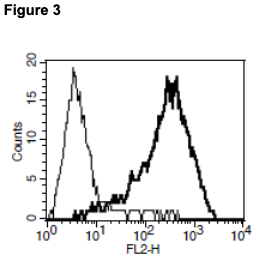Product Information
Catalog Number: HA1417- BA1
Lot Number: HA1417-BA1-073021
Quantity: 1 vial (2 x 106) frozen cells
Freeze Medium: Cellbanker2
Host cell: HEK293T
Transfection: Expression vector containing full-length human AGTR1 cDNA (GenBank Accession Number AB095743.1) with FLAG tag sequence at N-terminus and ARRB2 cDNA (GenBank Accession Number NM_004041)
Recommended Storage: Liquid nitrogen upon receiving
Propagation Medium: DMEM, 10% FBS, 1 µg/mL puromycin, 50 µg/mL hygromycin
Stability: In progress
Data Sheet
Background: AT1 (Angiotensin II, type 1) receptor is an angiotensin receptor with vasopressor effects and regulates aldosterone secretion. It is essential in controlling blood pressure and volume in the cardiovascular system. AT1 receptor antagonists are drugs useful in the treatment of hypertension, diabetic nephropathy and congestive heart failure. Blockade of AT1 receptors could also be a novel approach in the treatment of mood disorders and neurodegenerative diseases of the brain.
Application: Functional assays


Figure 1. Dose-dependent stimulation of calcium flux upon treatment with ligand, measured with MultiscreenTM Calcium 1.0 No Wash Assay Kit (Multispan MSCA01). Figure 2. Dose-dependent stimulation from arrestin recruitment upon treatment with ligand, measured with MultiscreenTM β-Arrestin Assay Kit (Multispan MSBA01). Figure 3. Receptor expression on cell surface measured by flow cytometry (FACS) using an anti-FLAG antibody. Thin line: parental cells; thick line: receptor-expressing cells.
References:
Bergsma et al. (1992) Cloning and characterization of a human angiotensin II type 1 receptor. Biochem Biophys Res Commun 183:989-995.
Jagadeesh (1998) Angiotensin II receptors-antagonists, molecular biology, and signal transduction. Indian J Exp Biol 36:1171-1194.
Saavedra et al. (1998) Blockade of brain angiotensin II AT1 receptors ameliorates stress, anxiety, brain inflammation and ischemia: Therapeutic implications. Psychoneuroendocrinology 36:1-18.
